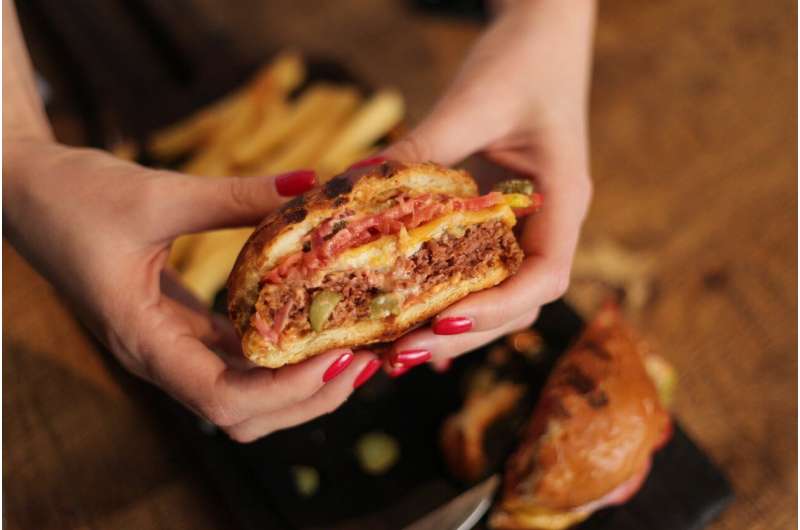
Plant-based burgers often promise protein comparable to their animal-based counterparts, but the way protein is expressed on current nutrition labels—a single generic value expressed in grams—can be misleading. That’s because the human body does not use “protein” per se. Instead, it needs essential amino acids, which are present in proteins, but the concentration and digestibility of amino acids are different among protein sources.
To account for these differences, a new standard for protein quality, the digestible indispensable amino acid score (DIAAS), was developed by the U.N.’s Food and Agriculture Organization (FAO) about a decade ago. It specifically focuses on the digestibility of essential amino acids, and aims to put more accurate tools in the hands of nutritionists and food assistance programs the world over.
A new study from the University of Illinois and Colorado State University leverages the DIAAS system to understand protein quality in beef and pork burgers and plant-based burgers from Impossible and Beyond Meat.
The researchers fed pork burgers, 80% and 93% lean beef burgers, the soy-based Impossible Burger, and pea-based Beyond Burger to pigs, the FAO’s recommended research subject for DIAAS studies. They then measured digestibility of individual essential amino acids, and used those digestibility scores to compute DIAAS values.
Both beef and pork burgers, served without buns, scored as “excellent” sources of protein (DIAAS scores 100+, for people of all ages). The Impossible Burger, when served without a bun, also scored as an excellent protein source for ages 3 and up, but not for children less than 3 years old. With a value of 83, the bunless Beyond Burger was a “good” source of protein for ages 3 and up.
“We have previously observed that animal proteins have greater DIAAS values than plant-based proteins and that is also what we observed in this experiment,” says Hans H. Stein, professor in the Department of Animal Sciences and the Division of Nutritional Sciences at Illinois and co-author on the European Journal of Nutrition study.
Burger patties are typically eaten with a bun, so the researchers also looked at the protein quality of patties and buns together. Because grain products, like hamburger buns, offer low protein quality, feeding the bun and the patties together reduced DIAAS values.
Consuming the Impossible Burger together with a bun reduced the DIAAS value to “good” for ages 3 and up. But when pork or 80% lean beef patties were consumed together with buns, DIAAS values were still at or above 100 for the over-3 age group, demonstrating that the needs for all essential amino acids were met by these combinations.
“There was a greater DIAAS value of mixing either the pork or beef burger with the bun—values of 107 and 105 respectively, for the over-3 age group—than there was for the Impossible Burger, which had a DIAAS value of 86 if consumed with the bun. That means you need to eat 15% more of the Impossible Burger-bun combination to get the same amount of digestible amino acids as if you eat the pork-based or the beef-based burgers. And if you have to eat more, that means you also get more calories,” says Mahesh Narayanan Nair, professor at Colorado State University and a co-author of the publication.
Stein says, “It’s particularly children, teenagers, lactating women, and older people who are at risk of not getting enough amino acids. Results of this experiment, along with previous data, demonstrate the importance of getting animal-based proteins into diets to provide sufficient quantities of digestible essential amino acids to these populations.
“This is also really important in developing countries where there may be little access to animal-based proteins, particularly for children. In some countries, a majority of children are amino acid-deprived. That’s extremely serious, because if children don’t get enough amino acids, their brain development can suffer. It’s especially important in those cases to design a strategy for getting high-quality proteins into diets for children.”
Source: Read Full Article
